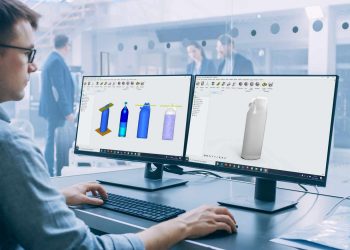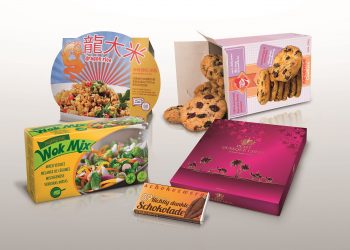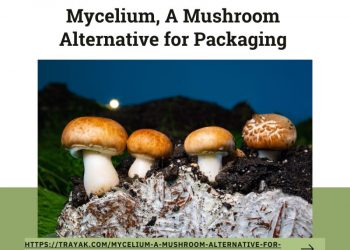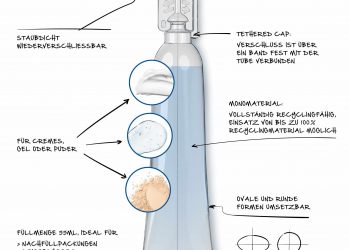When choosing paper for your paper bag, there are many parameters that one needs to choose from and if chosen correctly, you’ll have the optimum choice of bag which also suits your pocket.
In this case study, Sushant Gaur alludes to key considerations detailed hereafter.
The parameters to choose from are GSM, BF, COBB value, MG or MF, Brightness of paper etc.
The most misrepresented of this lot is GSM or grams per square meter, GSM is nothing but weight in grams of a 1 square meter paper. GSM is often taken as a measure of strength, where as it may be true that a non-achieving heavyweight boxer would still outlast a feather weight champion but in its own class a boxer with higher bursting factor would win! Paper used for paper bags is usually 35 GSM – 150 GSM. It is important to note that a hand-made paper bag manufacturer might push for a 120+ gsm product, this is because it is easier to die-cut thicker paper, however there is hardly any capacity that a high BF 100 gsm or below paper can’t handle.
Bursting Factor is one of the measures of strength of the paper. It represents the amount of pressure after which the paper will burst open. This is not only a good measure to know the amount of weight a bag can carry but also under how much weight the paper bag will burst open. Bursting Factor of paper used in paper bags is usually 14-40 BF, in most cases, anything above 30 BF is an overkill.
COBB value is a percentage of weight gain after the paper is submerged under water. Lower the COBB value, lesser water would it absorb and more would be the paper’s integrity under wetness. This is usually an ignored parameter in most purchase orders but it is an important one in a wet country like India. Wet Strength is another important parameter to note for wet usage of paper. Wet Strength is a measure of change in the strength of paper when wet versus its strength when dry. Paper Mills may add certain chemicals and raw materials to reduce the COBB value and increase the Wet Strength of the paper without a major difference in price. COBB value of 20 and below and Wet Strength of 20 and above are good for paper bags used to pack cold products which may attract condensation and moisture or slightly wet items like fruits and veggies.
MG is Machine Glazed and MF is Machine Finished, the same paper with an extra process called Glazing or calendaring. Calendaring is a simple process wherein the paper is run through rollers which smoothen out one side of it and give it a glazed look and feel. Since one side glazed paper is smooth on a microscopic level, its grammage variation, strength variation etc is less and printing quality is very high due to ink getting a smoother base. Machine Finished is a simple finish of paper which is both side rough. Other qualities of the paper would be same like GSM, BF etc but MG paper which is also more expensive than MF would have a shine on its top and MF would not.
Brightness of paper comes into play when we are using a variety of white paper. Bleached Kraft or MG Poster are common varieties of white paper used for paper bags. Brightness of paper means how much light is reflected off the paper. This parameter is not only important when sourcing printed material but the look and feel of non-printed white paper also changes drastically when brightness goes down and unless defined and locked in the purchase order, vendors might pull the old bait & switch on the customer since without this parameter, it is hard to lock the look and feel of the paper since color and shade have nothing to do with brightness. Since low brightness paper and high brightness paper have a healthy cost difference, this becomes the most important overlooked feature.
Natural-Shade paper is approx. 5%-10% cheaper than dyed paper. Those who are not looking to print may choose to order natural shade, which is grayish brown, other properties except brightness may remain same in natural shade.
A big issue faced by the paper bag market today is big companies forcing their vendors to cut costs and leading them to use paper rejected by foreign mills also called stock lot which is dumped in India for various reasons. This paper is cheaper than perfectly great quality Indian paper but has variations in every lot. These retailers use these bags to pack food items like grains, rice, fruits, vegetables, meat, fish etc. without doing any heavy metal migration tests first. They usually do these tests while placing the first order but since the stock lot material is different every day, how can one test be valid for another lot?
If sourcing is optimized using the parameters given above, sourcing costs may fall substantially and also vendors would also have stricter guidelines to stick to so that any variation in product can be reined in and the cost benefit be taken advantage of by the customer and not just the manufacturer.
Sushant Gaur, is the founder of Urja Packaging, India’s largest paper bag manufacturing company.
He started his career by setting a paper conversion unit in Delhi. Urja Packaging has now grown to become the leading manufacturer of Paper Pouches in India.
Urja Packaging is one of the largest Paper Bag/Lifafa/grocery bag manufacturing company in North India. Urja Packaging started operations in 2012.






